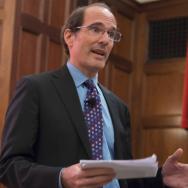When the police use tear gas or rubber bullets to disperse street demonstrators, why do protests sometimes grow? When U.S. states impose strict voter identification laws in an effort to discourage some groups from voting, why do their efforts often fail? What is the role of emotions like anger and fear in encouraging people to participate in politics—in elections or protests—or in keeping them at home?
These are questions that University of Chicago political scientist Susan Stokes, a leading scholar of democratic theory, explores in her recent virtual Harper Lecture, discussing the motivations behind protests in the context of the current global pandemic.
“Just as there are costs of participation in collective action, so there are also costs of abstention—costs involved and burdens involved in not going out, not voting, not protesting, not getting involved in other collective actions in politics,” said Stokes, the Tiffany and Margaret Blake Distinguished Service Professor of Political Science, during the Aug. 6 lecture.
The faculty director of the Chicago Center for Democracy, Stokes further explores these ideas in the award-winning book Why Bother? Rethinking Participation in Elections and Protests, co-authored with S. Erdem Aytaç of Koç University.
Published in 2019, the book delves into the costs of abstention—intrinsic and psychological, but no less real. These costs explain real-world patterns that are anomalies for existing theories, the authors argue. Sometimes, for example, increases in costs of participation are followed by more participation, not less.

